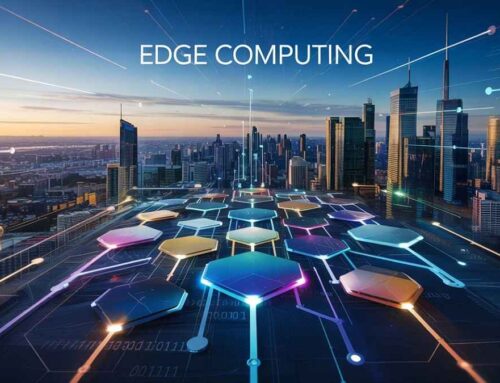
E-commerce Innovations
The world of e-commerce is more crowded than ever. With countless businesses entering the market every day, competition is fierce and staying ahead requires constant innovation. It’s no longer enough to simply sell products online – today’s consumers expect seamless experiences, personalized interactions and brands that stand out from the noise. So, how do you remain competitive in such a saturated space?
This article will explore key innovations in e-commerce that businesses can adopt to differentiate themselves, meet evolving customer expectations and thrive in a crowded market.
Understanding the Saturated E-commerce Landscape
Before diving into the solutions, let’s first take a step back to understand the current state of e-commerce.
Over the past decade, e-commerce has exploded in popularity. What began as a way to conveniently shop online has now evolved into a full-fledged ecosystem with online giants like Amazon, Alibaba and Shopify setting the bar high for customer experience and convenience. While this growth is exciting, it has also created a challenge: oversaturation. There are now more online stores than ever, all vying for the same customers.
To make matters more challenging, consumer expectations have risen dramatically. Shoppers are now accustomed to fast, free shipping, easy returns and personalized recommendations. They want a seamless experience across every touchpoint, from discovery to checkout and beyond. And with so many options available at the click of a button, brand loyalty is harder to maintain.
So how can e-commerce businesses continue to grow in such a competitive landscape? The answer lies in innovation. Companies that adapt and embrace new technologies and trends will have the upper hand. Let’s explore some key innovations that can help e-commerce businesses stand out.
-
Personalization and AI-Powered Recommendations
In the age of information overload, customers are bombarded with endless options. To cut through the noise, businesses need to deliver personalized experiences. Shoppers are more likely to engage with a brand if the experience feels tailored to their preferences and behaviors. This is where Artificial Intelligence (AI) comes in.
AI-powered recommendation systems, like those used by Amazon and Netflix, are excellent examples of how businesses can leverage data to personalize the shopping experience. These systems analyze user behavior, such as past purchases, browsing history and even what others with similar interests have bought, to recommend products that are more likely to appeal to each customer.
For example, an AI recommendation engine might suggest accessories to complement a recent purchase or show similar products when a customer is browsing a specific category. The result? A more relevant shopping experience that increases the likelihood of a sale.
Beyond product recommendations, AI can also help personalize marketing efforts. Businesses can use AI to create dynamic content that adjusts based on user preferences, such as personalized email campaigns, tailored website banners or customized product suggestions.
In a saturated market, where customers can easily switch from one brand to another, personalization is key to building loyalty and standing out.
-
Augmented Reality (AR) and Virtual Try-Ons
One of the biggest challenges for online shoppers is that they can’t physically interact with products before purchasing. This can lead to hesitation, uncertainty and a higher likelihood of returns. Enter Augmented Reality (AR) and Virtual Try-Ons.
AR allows customers to “Experience” products in a more tangible way, even from the comfort of their own homes. For example, fashion retailers can offer virtual fitting rooms where customers can see how clothing will look on their body without ever having to try it on. Home décor brands can use AR to allow shoppers to visualize how furniture will look in their space. Beauty brands like Sephora have implemented virtual try-ons, where users can see how different makeup products will look on their face using their phone’s camera.
The appeal of AR is that it reduces the uncertainty of online shopping. When customers have a better sense of what they’re buying, they feel more confident in their purchase decisions, leading to fewer returns and higher satisfaction rates.
By adopting AR technology, e-commerce businesses can enhance the customer experience, build trust and differentiate themselves from competitors who still rely on traditional product listings.
-
Voice Commerce and Conversational Shopping
As voice assistants like Alexa, Google Assistant and Siri become more integrated into our daily lives, voice commerce is becoming an increasingly popular way for consumers to shop. Voice commerce allows shoppers to make purchases using voice commands, providing a hands-free, convenient shopping experience.
Imagine a busy parent ordering groceries while cooking dinner or a commuter buying a gift while driving to work, all without touching a screen. Voice commerce makes these scenarios possible and its simplicity appeals to consumers looking for faster, easier ways to shop.
For e-commerce businesses, embracing voice commerce means optimizing for voice search. This includes ensuring that product listings are easily discoverable through voice assistants and using natural language in descriptions and metadata. Businesses can also integrate voice functionality into their apps or websites, allowing customers to interact with the brand through voice commands.
In addition to voice commerce, conversational shopping through chatbots is another way to improve the customer experience. Chatbots can guide customers through the shopping journey, answer questions, provide personalized recommendations and even process transactions, all in real time. With advancements in Natural Language Processing (NLP), chatbots are becoming more human-like, making them a valuable tool for businesses looking to enhance customer service and drive sales.
-
Subscription Models and Loyalty Programs
In a saturated market, customer retention is just as important, if not more so, than customer acquisition. One way to build long-term relationships with customers is through subscription models and loyalty programs.
Subscription models offer customers the convenience of receiving products on a recurring basis, while also ensuring a steady stream of revenue for the business. These models work well across a variety of industries, from beauty boxes and meal kits to pet supplies and coffee subscriptions.
For example, companies like Dollar Shave Club and Birchbox have built their entire business around the subscription model. Customers receive curated products on a regular basis, often with the option to customize or skip deliveries. The predictability of subscriptions creates a sense of loyalty, while the recurring revenue helps businesses grow consistently.
Loyalty programs, on the other hand, reward customers for their repeat business. By offering points, discounts or exclusive perks, businesses can incentivize customers to continue shopping with them rather than switching to a competitor. Loyalty programs also provide valuable data about customer behavior, which can be used to further personalize marketing efforts and enhance the overall shopping experience.
Both subscription models and loyalty programs are powerful tools for boosting customer retention, increasing lifetime value and staying competitive in a crowded market.
-
Sustainability and Ethical Practices
Today’s consumers are increasingly conscious of the environmental and ethical impact of their purchases. In fact, a growing number of shoppers actively seek out brands that prioritize sustainability and social responsibility. This shift in consumer behavior presents a significant opportunity for e-commerce businesses to differentiate themselves by adopting eco-friendly practices.
Sustainability in e-commerce can take many forms. For some brands, it’s about offering products made from recycled materials or adopting zero-waste packaging. For others, it’s about reducing carbon emissions through sustainable supply chain practices or partnering with carbon offset programs.
Patagonia is a great example of a brand that has successfully positioned itself as a leader in sustainability. The company is transparent about its environmental impact, offers recycled materials in its products and even encourages customers to repair rather than replace items.
In addition to environmental practices, ethical considerations are also becoming more important to consumers. Brands that prioritize fair labor practices, support local communities or donate a portion of their profits to charitable causes can build a deeper connection with their customers.
By aligning with the values of conscious consumers, e-commerce businesses can attract a loyal customer base and stand out in a crowded market.
-
Social Commerce and Influencer Marketing
Social media has become a key driver of e-commerce growth. Platforms like Instagram, TikTok and Pinterest are no longer just places to share photos, they’re now full-fledged shopping platforms. Social commerce allows consumers to discover, browse and purchase products directly from their favorite social apps, blurring the lines between social media and e-commerce.
For e-commerce businesses, social commerce provides an opportunity to reach customers where they’re already spending their time. By integrating shopping functionality into social platforms, businesses can create a more seamless and convenient shopping experience. Instagram’s “Shop” feature, for example, allows users to browse products and make purchases without ever leaving the app.
Influencer marketing is another powerful tool in the social commerce space. Consumers are more likely to trust recommendations from people they follow and admire on social media than traditional ads. By partnering with influencers, brands can tap into their audience and leverage their credibility to promote products.
Influencers can create engaging content, such as unboxing videos, product reviews or lifestyle shots featuring the brand’s products, helping to drive traffic and increase sales. This type of authentic, word-of-mouth marketing is particularly effective in a saturated market where consumers are bombarded with advertisements.
-
Flexible Payment Options and Buy Now, Pay Later (BNPL)
The checkout experience can make or break a sale. If customers encounter friction during the payment process, whether it’s limited payment options or complicated forms, they’re more likely to abandon their cart. To address this, many e-commerce businesses are adopting flexible payment options.
One of the most popular trends in this space is the rise of “Buy Now, Pay Later” (BNPL) services. BNPL allows customers to split their payments into smaller instalments over time, making high-ticket items more affordable. Services like Afterpay, Klarna and Affirm have gained widespread popularity, particularly among younger shoppers who appreciate the flexibility.
Offering BNPL options not only makes it easier for customers to make purchases, but it can also increase Average Order Value (AOV) as customers feel more comfortable buying more expensive items. It also appeals to consumers who may not have access to traditional credit or prefer not to use credit cards.
In addition to BNPL, businesses should consider offering a range of payment methods, including digital wallets (Apple Pay, Google Pay), cryptocurrency and even mobile carrier billing. Providing multiple payment options creates a smoother checkout experience and reduces the chances of cart abandonment.
-
Seamless Omnichannel Experiences
In today’s connected world, consumers expect a seamless experience across all channels – whether they’re shopping online, in-store or on a mobile device. This is where omnichannel strategies come into play.
An omnichannel approach ensures that every touchpoint, from physical stores to social media to mobile apps, is integrated and cohesive. For example, a customer might browse products on their phone, add items to their cart on a desktop and complete the purchase in a physical store. An effective omnichannel strategy ensures that the transition between these different touchpoints is smooth and frictionless.
To create a seamless omnichannel experience, businesses can integrate inventory management systems across all channels, offer options like “Buy Online, Pick-up In-Store” (BOPIS) and enable cross-channel returns. This not only enhances convenience for the customer but also increases the likelihood of repeat business.
Brands that can deliver a consistent and convenient experience across all channels will have a significant advantage in the crowded e-commerce landscape.
Conclusion: Innovate or Fall Behind
In a saturated e-commerce market, staying competitive requires constant innovation. Businesses that embrace personalization, AR, voice commerce, subscription models, sustainability, social commerce, flexible payments and omnichannel strategies will be better positioned to meet evolving customer expectations and stand out from the crowd.
It’s not enough to simply have a great product or a well-designed website – today’s e-commerce brands need to be agile, forward-thinking and customer-centric. By adopting the latest innovations and continuously improving the customer experience, businesses can not only survive but thrive in a competitive market.
The future of e-commerce is bright for those who are willing to innovate and adapt. Now is the time to embrace change, explore new technologies and build a brand that resonates with the modern consumer.















Nice blog here! Also your site loads up fast! What host are you using? Can I get your affiliate link to your host? I wish my web site loaded up as quickly as yours lol